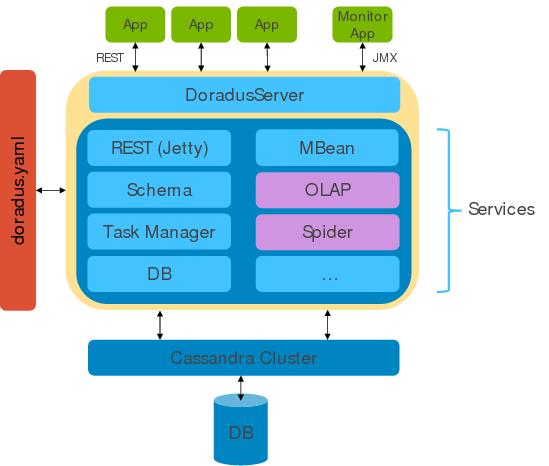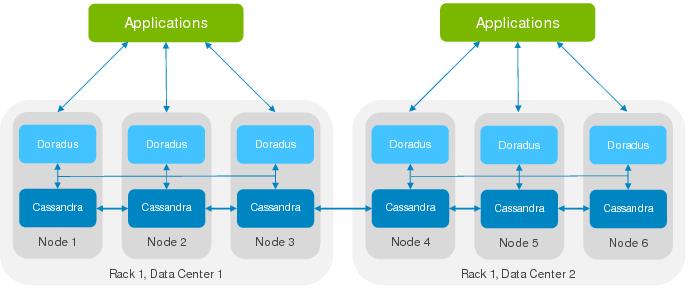|
•
|
Apps: One or more applications access a Doradus server instance using a simple REST API. A JMX API is available to monitor Doradus and perform administrative functions.
|
|
•
|
DoradusServer: This core component controls server startup, shutdown, and services. Entry points are provided to run the server as a stand-alone application, as a Windows service (via procrun), or embedded within another application.
|
|
•
|
Services: Doradus’ architecture encapsulates functions within service modules. Services are initialized based on the server’s doradus.yaml configuration. Services provide functions such as the REST API (an embedded Jetty server), Schema processing, and physical DB access. A special class of storage services provide storage and access features for specific application types. Doradus currently provides multiple storage services, include the OLAP, Spider, and Logging services. Doradus can be configured to use multiple storage services in a single instance.
|
|
•
|
Cassandra Cluster: Doradus currently uses the Apache Cassandra NoSQL database for persistence. Future releases are intended to use other data stores. Cassandra performs the “heavy lifting” in terms of persistent, replication, load balancing, replication, and more.
|
By default, Doradus operates in single-tenant mode, which means that all applications are stored in a single Cassandra keyspace. In multi-tenant mode, named tenants own one or more applications stored in a separate keyspace. Multi-tenant mode allows multiple applications to share a common Doradus cluster while providing data isolation and security. Full details on configuring and operating multi-tenant mode are described in the Doradus Administration documentation.
|
•
|
Doradus instances are peers, hence an application can submit requests to any Doradus instance in the cluster.
|
|
•
|
Each Doradus instance is typically configured to use all network near Cassandra instances. This allows it to distribute requests to local Cassandra instances, providing automatic failover should a Cassandra instance fail.
|
|
•
|
Cassandra can be configured to know which nodes are in the same rack and which racks are in the same data center. With this knowledge, Cassandra uses replication strategies to balance network bandwidth and recoverability from node-, rack-, and data center-level failures.
|

